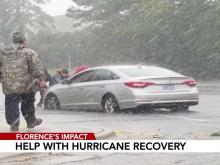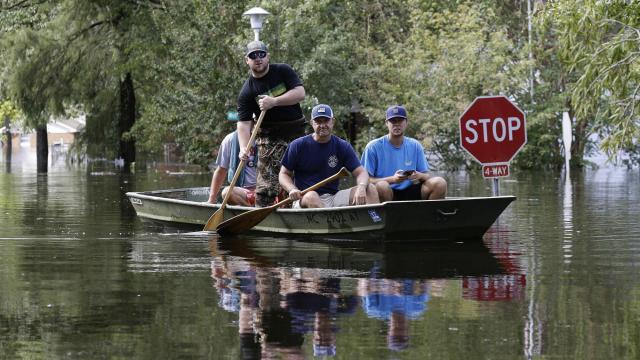- Triangle-area residents still reeling from storm damage brace for another round
- Severe weather storms forecast throughout South, Midwest; at least 3 dead in Texas
- Weather Impact Alert: Brad Panovich updates severe weather risk on Sunday
- Big March storm system threatens US with tornadoes, blizzards and wildfire risk
- As city leaders consider expanding at-risk zone for wildfire damage, home builders say it could raise costs
'Treacherous floodwaters remain,' Cooper says one week after Florence

Raleigh, N.C. — Gov. Roy Cooper said Saturday that North Carolina is still trying to recover from Florence, one week after the monster storm drenched parts of the coastline and southeastern parts of the state.
“The storm itself is gone but its treacherous floodwaters remain,” Cooper said during the Saturday morning briefing. “If you live in southeastern North Carolina, don’t let your guard down.”
As of Saturday, Cooper said:
- The state’s death toll from Florence stands at 32.
- At least 5,000 rescues have been reported around the state so far.
- Nine of the state’s river gauges are at major flood stage while four others are at a moderate stage.
- The number of people without power is down from a peak of about 800,000 to 29,000.
- About 2,800 people remain in shelters, which is down from a peak of 20,000.
- Parts of Interstate 95 and I-40 remain underwater and state officials said all of the water won’t recede for another full week or so.
- The state will active its temporary housing program to provide transitional homes for people who were forced out by Florence. The program will start in nine counties and residents will be allowed to choose transitional housing close to their permanent homes.
- FEMA’s assistance program is up and running for North Carolina residents affected by the storm and 69,000 have registered for it so far along with $12 million earmarked for victims. Anyone wanting help from FEMA should call 800-621-FEMA or 800-621-3362.
Florence came ashore last Friday around the Wilmington area as a Category 1 storm and slowly made its way across the coastline and the southeastern region of the Tar Heel State before moving into South Carolina. North Carolina experienced the worst of the storm, and much of the southeast section of the state is still underwater as rivers continue to crest with the water dumped by the slow-moving storm.
The Trump Administration has declared a disaster in parts of the state, making it easier for federal funding to flow into North Carolina for recovery efforts.
“So many people in our state are still hurting,” said Cooper, who has toured some the areas that were hardest hit by the storm. He said he plans to travel to Brunswick and Columbus counties later today by air and ground to see more devastation brought by the storm.
“I see pain and the loss of life, loss of crops and flooded homes and towns,” he said. “But I also see hope and hard work.”
Mike Sprayberry, director of the state’s emergency management office, said at the Saturday news conference that several rivers continue to flood, including the Cape Fear River in Pinder County and the Lumber River in Robeson County.
Sprayberry said the county has activated 10 kitchens in several areas, including Wilmington, Jacksonville, Hope Mills, Lumberton, and Washington, to provide hot meals to those affected by Florence.
State officials said during the press conference that 114 primary roads around the state remain closed and 540 secondary roads are also closed because of Florence. Crews are now working to identify and collect debris from roads that are impacting travel for motorists.
“Please heed the safety messages,” said state Highway Patrol Col. Glenn McNeill, who oversee the agency’s troopers.


